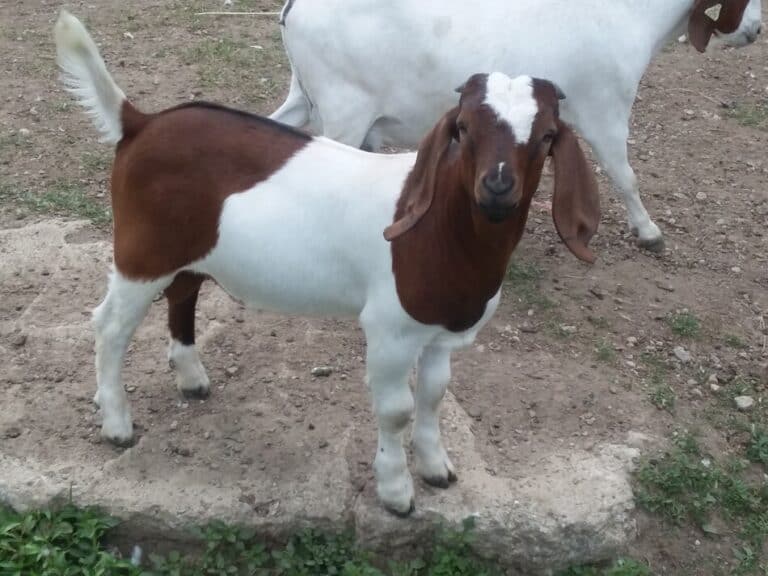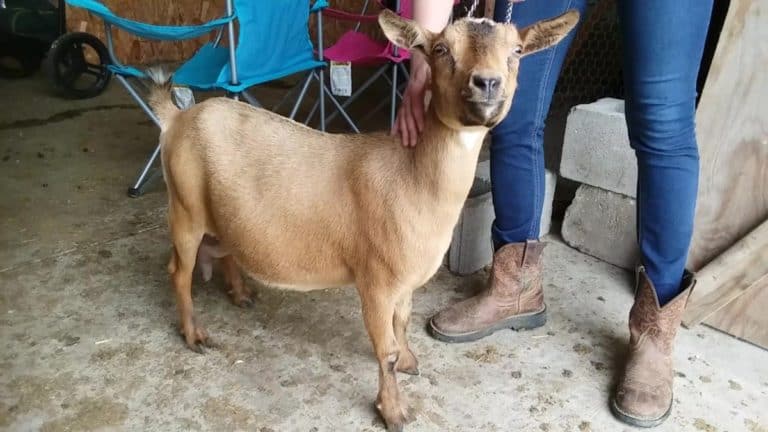Raising Goats: How Much Space Do You Need?
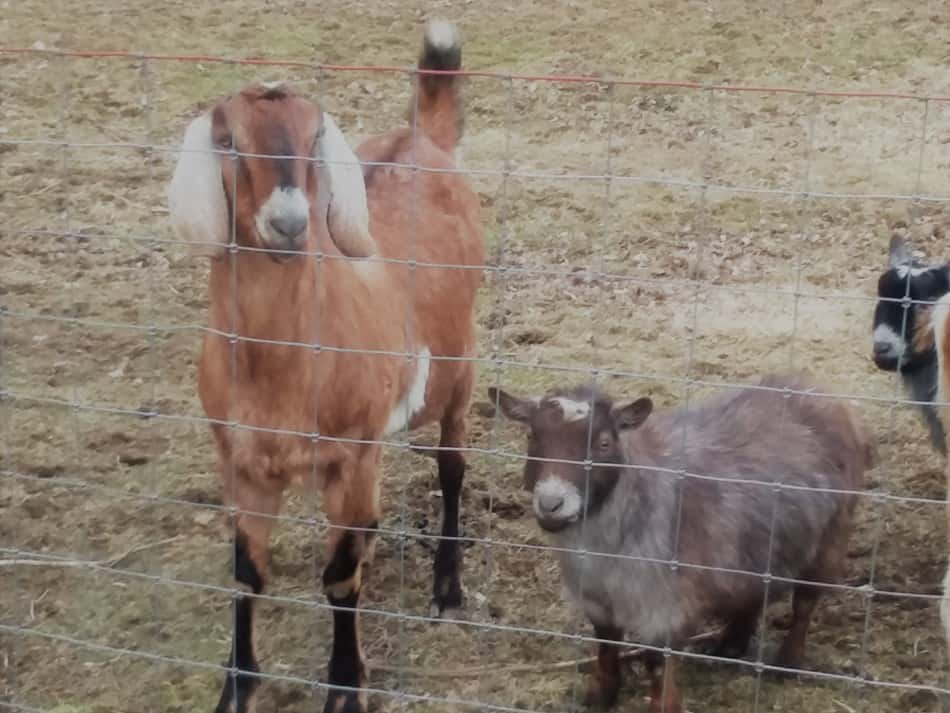
Goats are fun and full of character! It’s no wonder they are surging in popularity as people look to bring animals into their lives and their backyards!
Do you have enough space in your backyard for a few goats?
To raise goats you need (at a minimum) 15 sq. ft. under roof and 25 sq. ft. in an exercise area per goat, when you provide all of your goat’s feed. In addition to this amount of space per goat will be any pastured areas for your goats and an area to store hay and bedding.
I think you’ll be surprised when you get out the measuring tape and see how many goats you could put in your yard!
To help you get started, we’ll go over some of the spaces you’ll need to include for your goats and end with suggestions on how to save space while taking great care of your new herd.
You’ll need to figure out three main areas for your goats:
- Sheltered space
- Exercise/roaming area
- Hay and bedding storage
Before we go further, remember goats are herd animals, they need a buddy.
If you look around and see that you are going to be short on space, reconsider getting goats or go with a smaller breed of goat that will take less space and feed.
14 Common Goat Breeds gives you an overview of your goat breed choices.
Read my article on Nigerian Dwarf Goats, for details on a great small goat choice.
Each goat needs 15 sq. ft. inside and 25 sq. ft. outside
15 sq. ft., 25 sq. ft. How much space is that?
I have to admit, knowing how big something is by looking at it or doing a little math, is not one of my strengths. My husband has a knack for it, I do not.
When I read 15 sq. ft. per goat, I need something to compare it to for me to “get it.”
Here are some common items listed by size to help visualize what you need:
- Full sheet of plywood 8 ft x 4 ft= 32 sq. ft. That’s enough space for 2 large goats or three small goats in their inside pen/shelter or enough space for one goat to have an exercise area.
- Compact Car parking space 8 ft x 16 ft= 128 sq. ft. That’s enough space for 8 large goats or 12 small goats in the sheltered pen or the space for 5 goats to have an exercise area.
- A king size mattress 6.3 ft x 6.6 ft.=41.5 sq. ft. That’s enough space for two large goats and four small goats inside the pen or one (almost two) goats to have an exercise area.
Now that you have a better idea of what you are looking for, space wise, head out to your yard and see what you’ve got to work with.
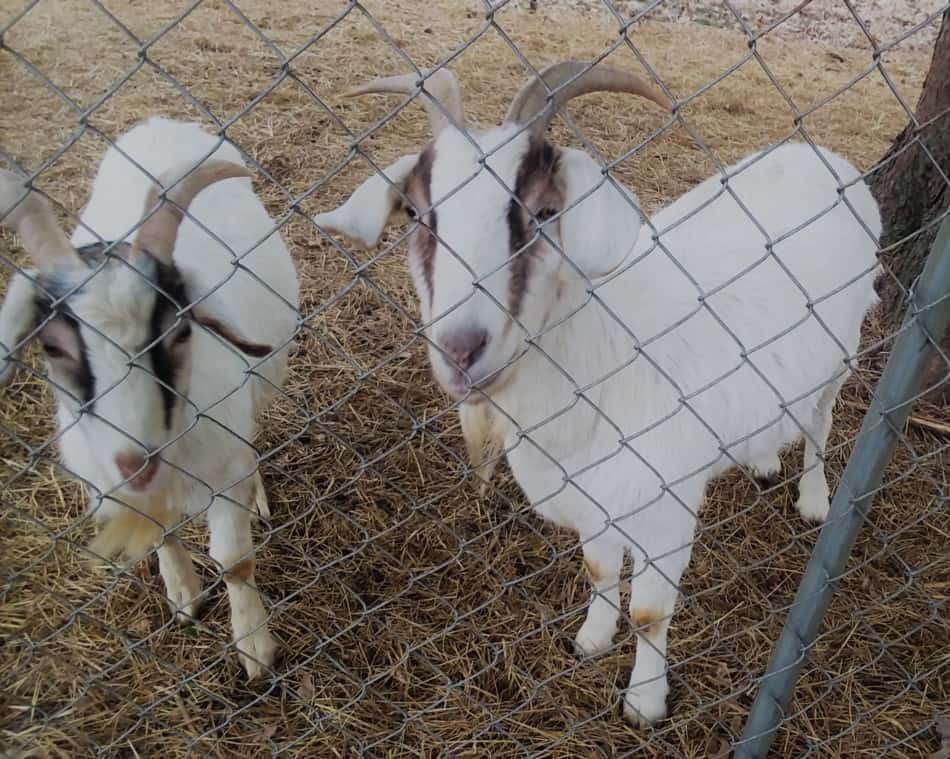
Get creative in your thinking about goats
Could you use part of the garage as a goat shelter? If you put up a roof and fence in the yard, what do you end up with?
Could you go mobile and move the goat pen through the yard as needed?
Get creative and consider some new perspectives. Nearly any size area can work, it’s up to you to see the opportunity available.
Wondering where I came up with the 15 and 25 square feet figures?
Here’s an article Housing and Working Facilities for Goats from the University of Massachusetts Amherst. If you are looking for even more information, this article is a good place to start.
Space needed in a shelter per goat is 15 sq. ft. each
Your goats will need 15 square feet each in some sort of shelter. If you have the smaller breeds of goats, you could go with 10 square feet each.
The shelter could be their own barn, part of a barn shared with other animals or it could be a simple three sided shed that you put together from pallets or some other opportunity material structure.
I’ve seen videos of people making a mini “barn” out of a hooped up cattle panel that was covered with a tarp and held down with T posts.
Some folks are using this for the animal, some as a covered area for hay storage.
The point is the shelter doesn’t have to be fancy, it just needs to shelter the goats from the elements.
Goats need shelter from wind, rain and cold
Your biggest challenges will be wind, rain and cold. Goats do not put on a fat layer on the outside of their body, like a cow or a sheep.
The importance of the fat layer is that it provides insulation against the colder weather. Since goats do not have the extra insulation, they need a physical shelter.
Goats need shelter from the heat
What about the heat? Goats seem to handle heat better than most livestock. We have both goats and sheep and have noticed a tremendous difference in how the goats and sheep handle the heat.
The goats seem to be comfortable much longer than the sheep, but even the goats like some shade when the summer day is at it’s hottest!
The main point is to give your goats the option to make themselves comfortable in the weather, whatever the weather happens to be for the day or the season.
Goats do not like to be wet!
A special consideration for goats is being wet. They hate it.
No livestock likes to be wet, really, but goats seem to have more trouble than most dealing with wet conditions.
If nothing else, you’ll see an explosion in parasite and foot problems!
Make sure your goats have a dry place to spend the day. Wondering if the area is dry enough for them? Put down a knee in the pen.
If your pants are wet, you need to use more bedding or have somewhere else for the goats to be for the day.
When siting your goat enclosure, be sure to pick as high of a spot as you can. Wet goats are unhappy goats.
To keep your goats happy and healthy, keep them dry.
Goats need space in an exercise pen
Since goats love to get outside and exercise, you’ll want to have an exercise pen available to your herd.
You’re going for 25 square feet per goat in the “roaming around” area. This roaming area can be outside or a larger, more open pen under roof.
If your exercise/roaming area is likely to get muddy, you can give the goats access to it only on acceptable weather days.
Think of how kids at school are allowed on the grassy part of the playground only on nice days, so they don’t get themselves or the grass all muddy.
Make a sacrifice area for your goats
I like to make a smaller lot that is outside, but not grass. An area that is all weather (doesn’t get muddy) so the goats can get out of the barn/shelter yet not have access to the rest of the yard.
With larger livestock operations, this is called a sacrifice area, meaning you keep the herd here in bad weather so they don’t hurt the rest of the land.
The word “sacrifice” is used because you are loosing the production (grass growth) of that small area to keep the rest of your grazing area nice.
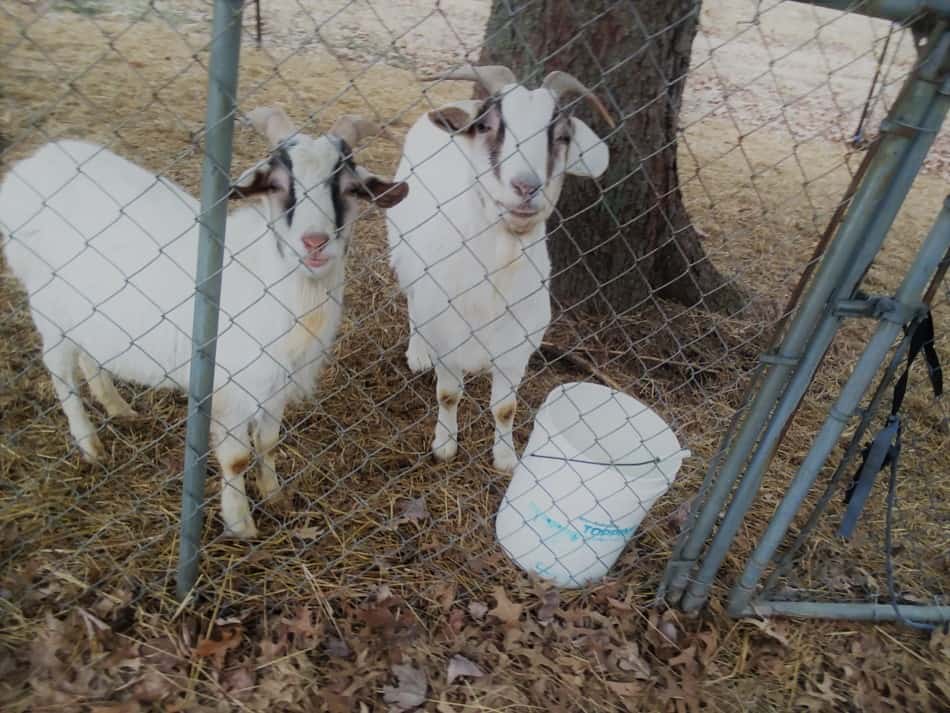
This is how my daughter and her husband keep their goats.
They have two goats that live in the yard in a chain link dog kennel with a calf hutch for a shelter.
When that area gets too full of uneaten hay, or they just want to move the goats, they drag the dog kennel to another spot.
On nice days the goats are let out into the rest of the yard, but still locked up at night.
If you turn out your goats into your yard to eat:
Your goats will still need fed! Remember, goats are browsers, not grazers, meaning they are not getting much food off of the grass in your yard.
Unless your yard is really a big wooded lot, your goats still need fed hay, to make sure they are getting everything they need to eat.
By using an exercise yard and letting the goats out as the weather permits, the goats have a nice place to live.
Even in the not so great weather they get plenty of fresh air and when the grass in the yard can handle goat hooves, they can explore more territory.
You’ll need storage space for goat hay, straw, etc.
It can be easy to overlook some of the non goat space that you’ll need to think about in order to take great care of your goats.
The biggest space hog will be hay, then bedding and a small amount of space for supplies.
Goat Feeding And Nutrition shows you how to figure up the right diet for your goats.
The good news is hay can be stored in a loft or under a tarp on a pallet, in a non goat area! Plan to keep a month’s worth of hay on hand at all times.
This isn’t a scarcity thing, it’s a don’t run out of hay thing!
Especially since many farmers have other jobs and are farming part time, you may have to wait a few days to get your hay delivered.
Another option, the one we use, is hay auctions. If available in your area, you can save quite a bit of money per bale buying in a full load, but you’ll need a place to keep it!
Space saving hay and bedding choices for goats
Hay: If space is at a premium in your goat pen, consider using chaffhaye.
Please note, I have never used this, but would be looking into it heavily if I had trouble keeping/getting enough hay to my goats.
Strictly speaking, chaffhaye is not hay, it’s closer to silage (like sauerkraut for animals) but can be used just like you would feed hay.
Be sure to note that chaffhaye is used at about half the amount of hay, so if your goats need 3 pounds of hay per day, with this stuff they need 1.5 pounds per day each.
Look it up, you’ll like what you read.
Once again, I have never used chaffhaye. If I was really tight for space and needed every square foot I could get for my goats, this is where I would look first to see if I could feed my herd well using less storage space.
Bedding: The best space saving bedding is sawdust. Especially those compressed bales that are vacuum sealed.
There is a lot of bedding in that bag! We normally use straw as bedding, simply because it is easier for us to get in our area.
If I was looking to save on storage space, sawdust as bedding will be much less space hungry than straw.
Just in case goats get out: grain lock down
When your goats get out (notice I wrote when, not if) and “attack” the hay, they will make a mess of it, guaranteed. Annoying and wasteful, but that’s about it.
If, however, you have grain that they can break into, now, you’ve got a problem. Make sure the grain is in a goat proof container.
I’m talking about more than a snap down lid, here.
The best solution I have run across is a repurposed chest freezer used as a storage chest.
I realize that a chest freezer is pretty big, so it won’t work for everyone. That’s okay.
I am mentioning it to get you thinking of other things you could use or get a hold of that will fit in your space.
